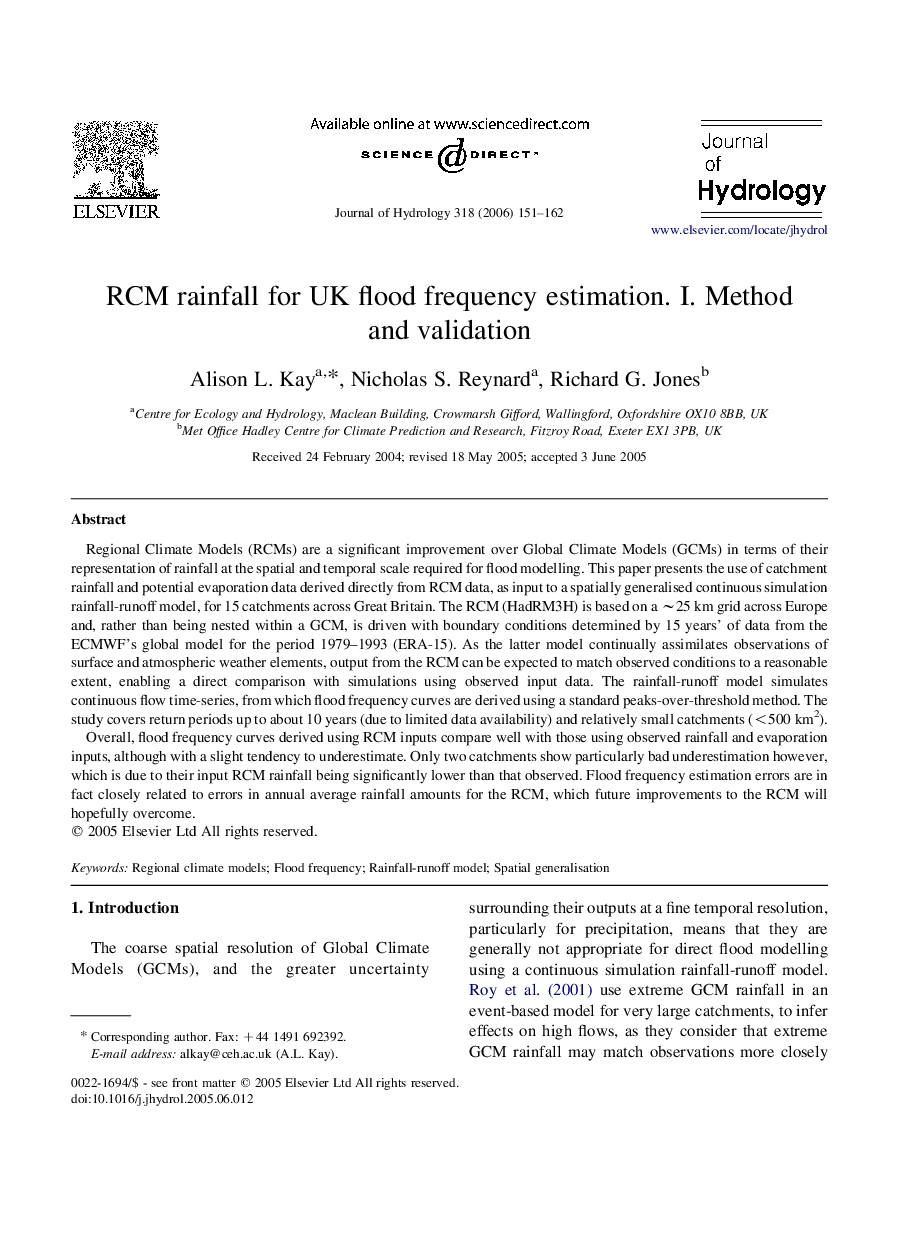| Article ID | Journal | Published Year | Pages | File Type |
|---|---|---|---|---|
| 4580738 | Journal of Hydrology | 2006 | 12 Pages |
Regional Climate Models (RCMs) are a significant improvement over Global Climate Models (GCMs) in terms of their representation of rainfall at the spatial and temporal scale required for flood modelling. This paper presents the use of catchment rainfall and potential evaporation data derived directly from RCM data, as input to a spatially generalised continuous simulation rainfall-runoff model, for 15 catchments across Great Britain. The RCM (HadRM3H) is based on a ∼25 km grid across Europe and, rather than being nested within a GCM, is driven with boundary conditions determined by 15 years' of data from the ECMWF's global model for the period 1979–1993 (ERA-15). As the latter model continually assimilates observations of surface and atmospheric weather elements, output from the RCM can be expected to match observed conditions to a reasonable extent, enabling a direct comparison with simulations using observed input data. The rainfall-runoff model simulates continuous flow time-series, from which flood frequency curves are derived using a standard peaks-over-threshold method. The study covers return periods up to about 10 years (due to limited data availability) and relatively small catchments (<500 km2).Overall, flood frequency curves derived using RCM inputs compare well with those using observed rainfall and evaporation inputs, although with a slight tendency to underestimate. Only two catchments show particularly bad underestimation however, which is due to their input RCM rainfall being significantly lower than that observed. Flood frequency estimation errors are in fact closely related to errors in annual average rainfall amounts for the RCM, which future improvements to the RCM will hopefully overcome.
